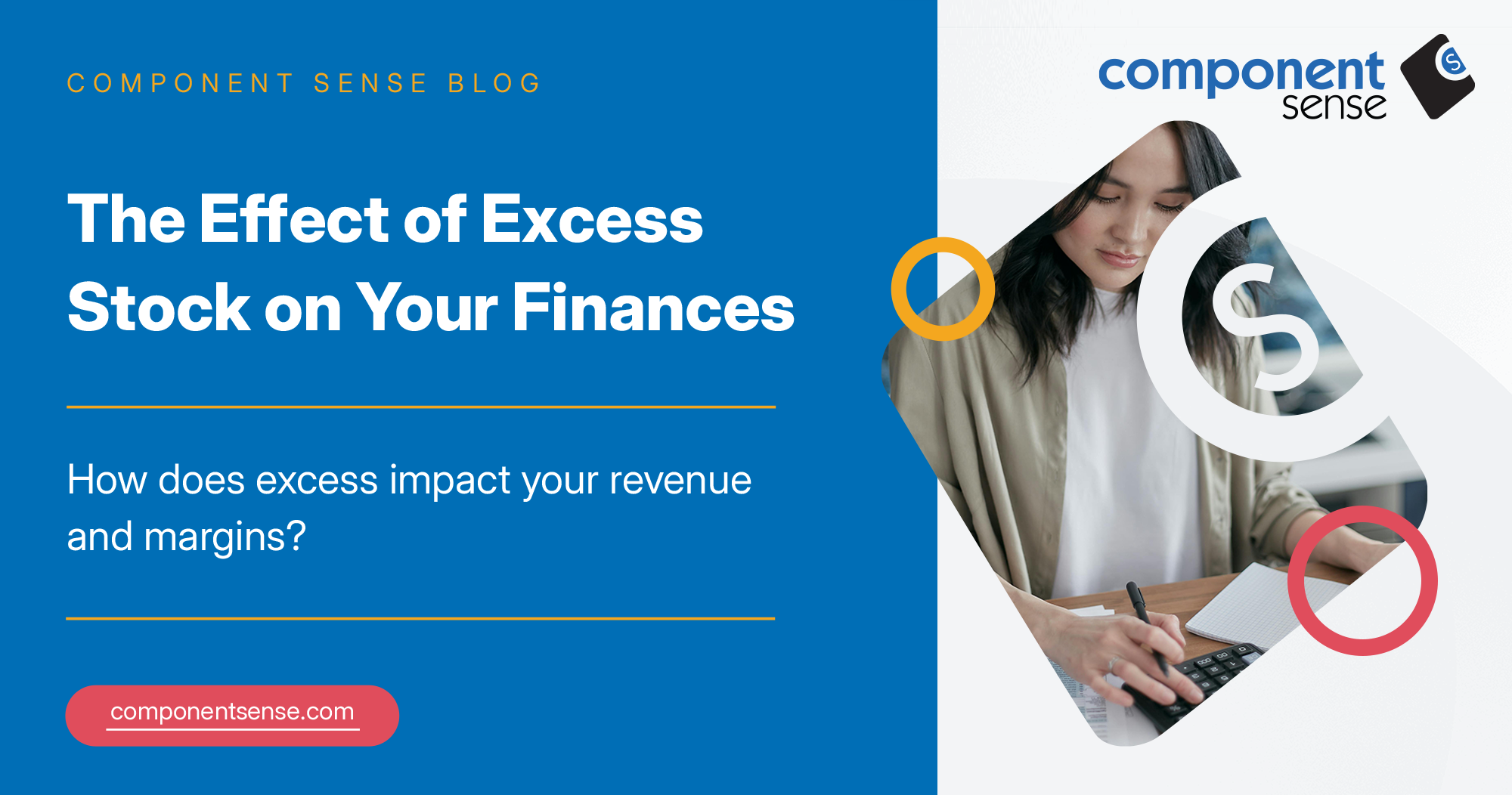The Effect of Excess Stock on Your Finances

Research by Kearny of the high-end technology manufacturing industry found a 53% increase in total inventory levels between 2019 and 2022.
The impact of COVID-19, among other supply chain disruptions, saw top companies in this segment accumulate more than $250 billion in inventory. A lot of these parts could now already be classified as excess and obsolete (E&O) stock.
At Component Sense, we still see the effects of over-forecasting every day. But what does this large amount of excess mean for companies in terms of revenue? And are there potential tax implications to consider?
This article will cover the financial considerations of excess stock. It is important to note that taxation is highly personalised business to business, as well as being influenced by geographical location and other unique factors. Tax regulations may also change over time, so speaking with a professional accountant for in-depth advice is crucial.
How excess component stock impacts margins and revenue
When tallying the total cost of excess inventory, looking past the outright price you paid for the parts is essential. A holistic view of the lifetime value of excess gives you a picture of the actual financial implications. While margin (percentage of profit vs revenue) differs from revenue (total earnings), we will discuss them concurrently for simplicity.
Storage and insurance
EMSs (electronics manufacturing services) and OEMs (original equipment manufacturers) both agree that reduced warehouse space caused by excess is an issue. Holding too much E&O stock ties up capital and incurs extra storage and insurance costs. When weighing up the cost of inventory insurance (usually to protect from natural disasters or theft), the margin on excess parts is far less appealing.

Opportunity cost
The electronics industry moves quickly. IBM studied 2400 C-suite executives worldwide and found that organisations that embraced innovation had a 58% higher revenue growth rate than those that did not.
Innovation often requires the freedom to react quickly. When money is stuck in excess component stock, it sits idle and can not be used to chase new ideas and opportunities. Not to mention, many banks have strict limits in their lines of credit regarding inventory financing, given that excess can reduce operating cash flow.
Operational efficiency
For many people within the electronic manufacturing industry, their KPIs (key performance indicators) are directly related to operational efficiency. Even the slightest delays to the production line can have costly flow-on effects and significantly affect margins.
Having a warehouse full of excess inventory can be highly counterproductive. Too much E&O stock can push back schedules, given the lack of warehouse space for higher-priority parts. Not to mention, added setup costs may also be incurred to ensure unwanted components go to use.

Obsolescence
One of the biggest mistakes to avoid with excess inventory is sitting on it for too long until it is obsolete.
Especially with the rise of AI, the demand for new and improved components is only increasing. As a result, we can expect an uptick in EOL (end-of-life) announcements. This trend may lead to increased part write-offs and financial losses for electronic manufacturers. Find out more about the best time to sell your excess stock in our blog.
How excess component stock may impact tax
Excess stock is generally considered a cash resource, as you have paid for it. Having too much excess means you have less cash flow. Our global electronics ecosystem sees manufacturers based all over the world. Each nation comes with its own set of regulations regarding tax.
Depending on where you are located, you may need to consider any number of the following:
- In nearly every country, pricing arrangements for transferring inventory between related parties are closely scrutinised by the government.
- In some countries, VAT (value-added tax) could be imposed on the sale of goods.
- In most cases, sold components are deductible as part of the Cost of Goods Sold (COGS).
- In some nations, holding too much excess may impact GST (goods and services tax).
- In some countries, there are potential tax-related incentives to consider, like the Export Processing Zones (EPZs) and Industrial Zones (IZs) in Vietnam, the Productivity and Innovation Credit (PIC) scheme in Singapore, or the Research and Development (R&D) Tax Credits in certain states in the U.S.A.
Make effortless revenue from your excess with Component Sense
While some may view E&O inventory as dead stock, Component Sense sees it as an effortless revenue stream for electronic manufacturers. In many cases, it makes both financial and environmental sense to redistribute excess rather than scrapping it.
Our business deals with customers worldwide, but we highly recommend you speak to a local professional accountant before making any business decisions regarding tax.
Click the button below to speak to someone about taking control of your excess.